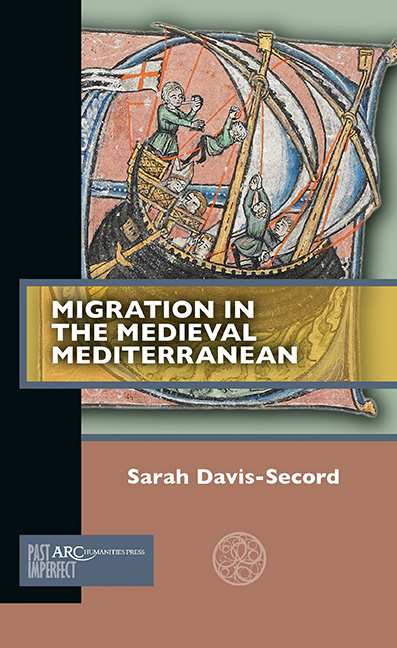Book contents
- Frontmatter
- Contents
- Introduction
- Chapter 1 Refugees from the Islamic Conquests
- Chapter 2 Hadrian and Theodore
- Chapter 3 St. Elias the Younger
- Chapter 4 Constantine the African
- Chapter 5 Jewish Refugees from the Norman Invasion
- Chapter 6 Merchants
- Chapter 7 Imam al-Mazari and Other Muslim Scholars
- Chapter 8 Unnamed Sicilian Girl
- Chapter 9 George of Antioch and Other Immigrants to Sicily
- Chapter 10 Moses Maimonides
- Chapter 11 Religious Converts
- Conclusion
- Further Reading
Chapter 5 - Jewish Refugees from the Norman Invasion
Published online by Cambridge University Press: 13 January 2022
- Frontmatter
- Contents
- Introduction
- Chapter 1 Refugees from the Islamic Conquests
- Chapter 2 Hadrian and Theodore
- Chapter 3 St. Elias the Younger
- Chapter 4 Constantine the African
- Chapter 5 Jewish Refugees from the Norman Invasion
- Chapter 6 Merchants
- Chapter 7 Imam al-Mazari and Other Muslim Scholars
- Chapter 8 Unnamed Sicilian Girl
- Chapter 9 George of Antioch and Other Immigrants to Sicily
- Chapter 10 Moses Maimonides
- Chapter 11 Religious Converts
- Conclusion
- Further Reading
Summary
Since many medieval migrations were spurred by territorial conquests—especially ones that resulted in significant changes to a region's governance and its dominant religion, language, and culture—the eleventh and twelfth centuries saw significant demographic transformations in the lands surrounding the Mediterranean Sea. The Norman invasion of Muslim Sicily was just one example of the large-scale movements of Christian polities into Muslim lands of the region during these centuries. The Spanish “reconquista” was the progressive southward advance of Christian kingdoms into the Muslim states of the Iberian peninsula, and the crusades, likewise, represent Christian incursions into Muslim spaces and the shifting balance of power in the greater Mediterranean area. These political changes were incredibly significant for broader history, but we should also keep in mind the human aspect of such conquests—they often brought violence, dislocation, death, and significant changes in living conditions, religion, language, and culture for local populations.
Once again, taking a closer look at migration patterns to and from Sicily allows us to see these personal elements in action. Many Sicilian Jews—who, much like the Greek Christian communities in Muslim Sicily, viewed the arrival of the Latin Christian Normans with alarm—decided to migrate away from the island rather than remain under Latin rule. Sicily's Jewish population included both established communities, who had lived on the island since at least the fourth century, and newer arrivals. The latter were members of the highly mobile merchant families whom historians know from a cache of letters and documents called the Cairo Geniza. Many people from the Geniza community of Jews lived only temporarily in Sicily, with other parts of their extended families living in Fustat (Old Cairo) or various cities in North Africa. Several letters written to and from Geniza merchants detail the violence and disruption attendant upon the Norman invasion of the island and its surrounding waters. It is also through these letters that we find some of the most detailed personal accounts of cross-Mediterranean migration in action.
For instance, one Sicilian Jew who had fled from the island to Tyre (in the eastern Mediterranean), wrote a letter to his relative in Fustat with details of the violence and disorder that spurred his migration.
- Type
- Chapter
- Information
- Migration in the Medieval Mediterranean , pp. 45 - 52Publisher: Amsterdam University PressPrint publication year: 2021



